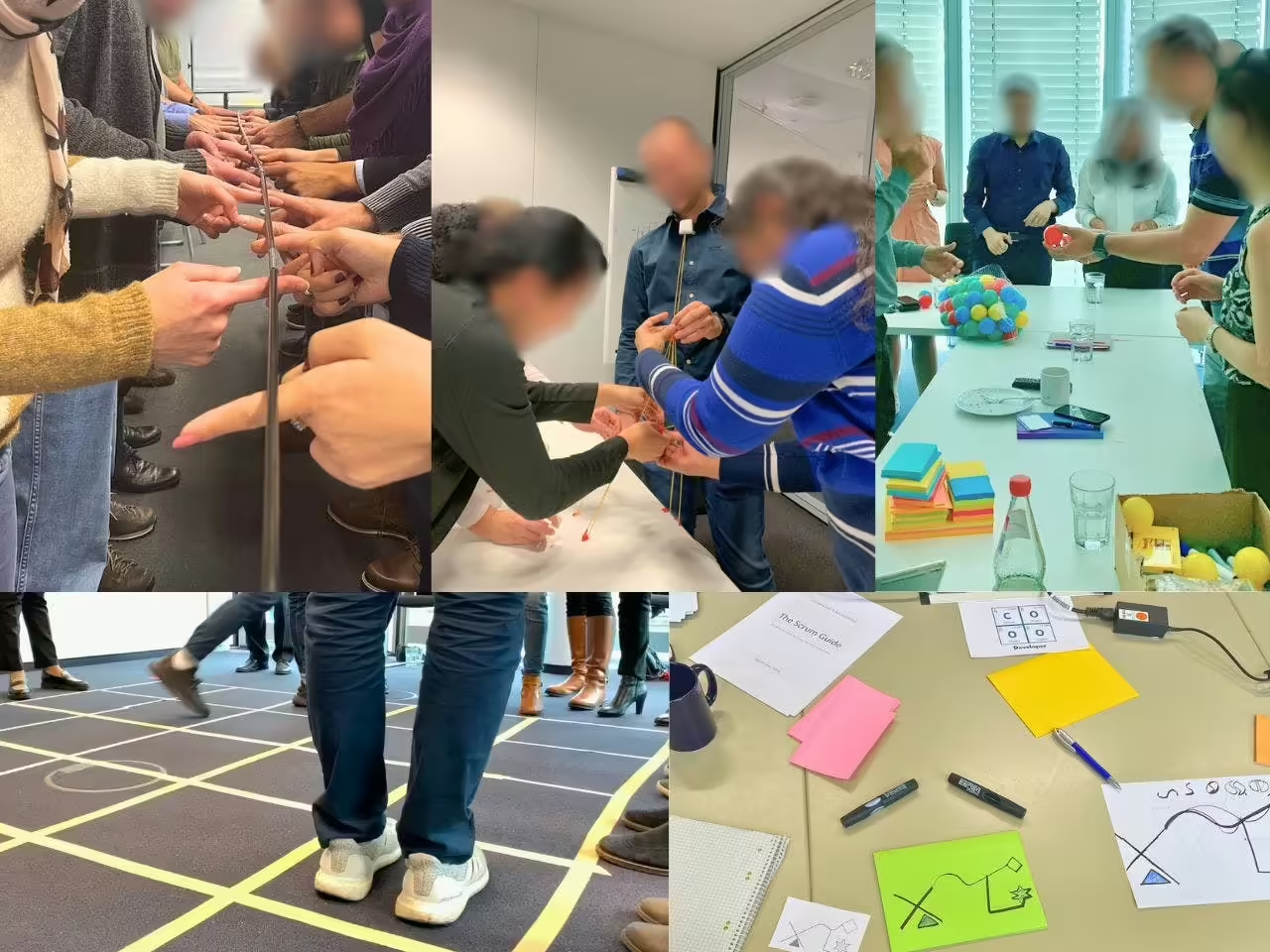If you’re an agile coach, scrum master, or consultant, you know that delivering effective agile training isn’t just about flipping through slides—it’s about creating an engaging, memorable experience that truly resonates with your participants. Whether you’re leading a two-day scrum master workshop, diving deep into Test-Driven Development (TDD), or guiding leaders through agile transformations, the way you facilitate can make all the difference.
I’ve conducted countless trainings for global companies, big and small, and over the years, I’ve tried and tested a plethora of facilitation techniques. Now, I’m pulling back the curtain to share 13 of my favorite hacks that can instantly amp up the quality and effectiveness of your agile trainings. So, ready to level up? Let’s dive in!
1. Start by Gathering Expectations

Kick Things Off Right
Forget the awkward small talk and endless intros. Instead, start your training by asking your participants about their expectations. Why are they here? What do they hope to walk away with? Think of yourself as the product owner and your students as the customers—it’s all about delivering value.
How I Do It:
- Sticky Notes Galore: Hand out sticky notes and ask everyone to jot down their expectations—one per note, please!
- Liberate the Structure: For larger groups, I use the 1-2-4-All liberating structure to help cluster and prioritize expectations.
- Peek into Their Past: I also ask about their prior experience with the topic. This helps me tailor the training to their expertise level.
Why It Works:
- Customization: You can adjust your content on the fly to meet their needs.
- Engagement: Participants feel heard and valued from the get-go.
- Accountability: Throughout the training, revisit these expectations. It keeps you on track and shows participants you’re committed to meeting their needs.
2. Conduct Regular Retrospectives

Feedback is a Gift
Why wait until the end to find out what could’ve been better? I run retrospectives at the end of each day—or even during breaks—to get immediate feedback.
How I Do It:
- The 4Ls Retrospective: Ask participants what they Liked, what they Learned, what they Lacked, and what they Loathed.
- Create a Safe Space: Encourage honesty by making it clear that all feedback is welcome and valued.
Why It Works:
- Continuous Improvement: Adjust your approach in real-time.
- Enhanced Learning: Participants reflect on their learning, reinforcing key concepts.
- Stronger Connections: Shows you’re invested in their experience.
3. Incorporate Games into Your Training

Make Learning Fun Again
Let’s face it—everyone loves games (even if some engineers prefer to call them “exercises” or “simulations”). Games are a fantastic way to teach complex concepts quickly and effectively. Plus, they’re a blast!
How I Do It:
- Choose Purposeful Games: Select games that align with the training objectives. For example, to demonstrate the power of face-to-face communication, I might use the “Draw Requirements Game” where participants hilariously stumble over written requirements documents.
- Create Emotional Experiences: Games can evoke feelings like the fear a manager might feel during an agile transformation. These emotional connections make the lessons stick.
- Get Inspired: My big idol is a leadership guru from Silicon Valley. Her workSHOCKS (yes, you read that right) are insanely effective because she engages participants in games constantly. Inspired by her, I’ve built up my own game collection.
Why It Works:
- Accelerated Learning: Participants grasp concepts faster through experiential learning.
- Memorable Moments: The fun and sometimes chaotic nature of games makes the lessons unforgettable.
- Behavioral Change: Games can lead to long-term changes in attitudes and behaviors.
Steal My Secrets:
I’ve started collecting and documenting these games in my Agile Games Collection. If you’re looking to spice up your training with some tried-and-true games, check it out here.
4. Use a Visible Timer for Timeboxing
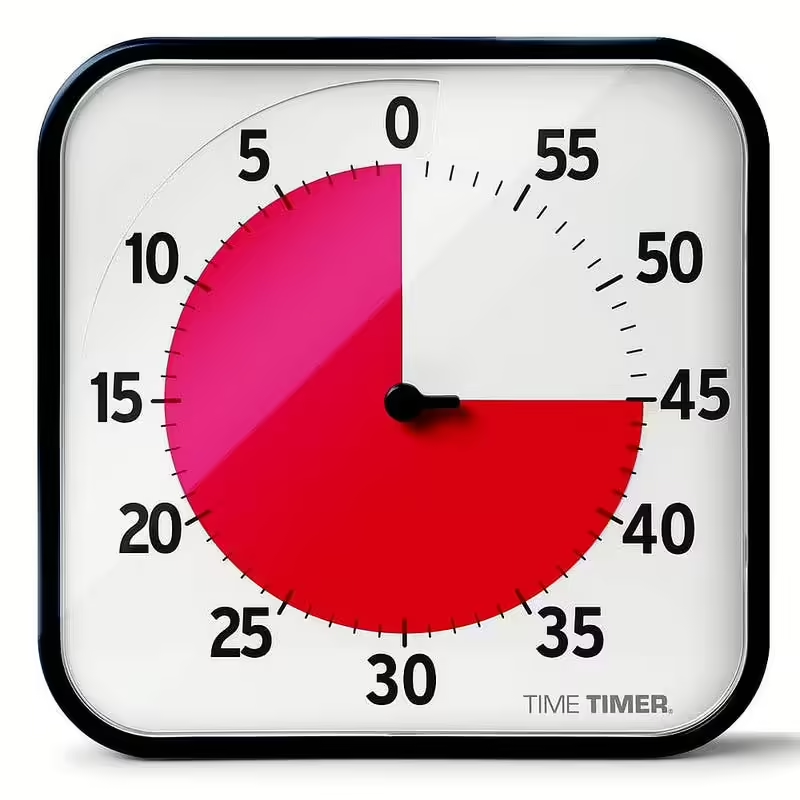
Time is of the Essence
Timeboxing is a core agile principle, and modeling it in your training can be incredibly powerful. But the timer needs to be visible to everyone, not just you.
How I Do It:
- Go Big or Go Home: I use a large, mechanical timer that’s hard to miss.
- Digital Options: If you prefer, an iPad app or projected timer works too.
Why It Works:
- Transparency: Everyone knows how much time they have.
- Empowerment: Participants can manage their own time, fostering accountability.
- Modeling Behavior: You’re not just teaching agile principles; you’re living them.
5. Incorporate Frequent Breaks
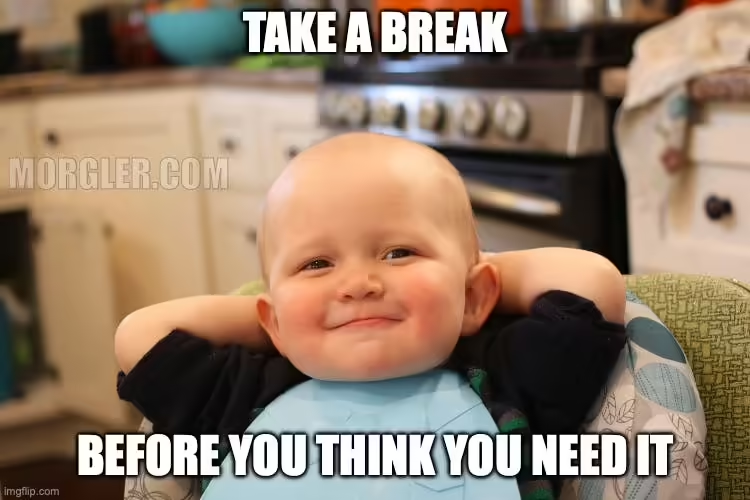
Keep Energy Levels High
Ever notice how people’s eyes glaze over after about an hour? Let’s prevent that.
How I Do It:
- The 60-90 Rule: I never go longer than 90 minutes without a break. Usually I schedule 5-10min breaks every 60min.
- Be Proactive: Take a break before you think you need it.
Why It Works:
- Fresh Minds: Regular breaks keep participants alert.
- High Energy: Short pauses recharge everyone, including you.
- Focus: Prevents getting lost in the weeds on any given topic.
6. Avoid Starting with Self-Introductions

It’s Not About You (Yet)
Starting with your life story can send participants into snooze mode. Instead, dive right into the action.
How I Do It:
- Exercise First: Start with an activity like gathering expectations or a quick game.
- Storytelling: Share an interesting anecdote related to the topic to pique interest.
- Introduce Later: Share a brief intro about yourself an hour or two in, or when someone asks.
Why It Works:
- Immediate Engagement: Participants are active from the get-go.
- Sets the Tone: Signals that this training is interactive and participant-focused.
- Maintains Energy: Keeps the momentum going.
7. Write It Out for All to See

Visuals Matter
Capturing ideas visually makes a big difference.
How I Do It:
- Flipcharts and Sticky Notes: Write contributions where everyone can see them.
- Participant Involvement: Hand them the marker and let them write it themselves.
Why It Works:
- Shared Understanding: Ensures everyone is on the same page.
- Memory Aid: Visuals help reinforce learning.
- Engagement: Keeps discussions dynamic and interactive.
8. Document with Photos
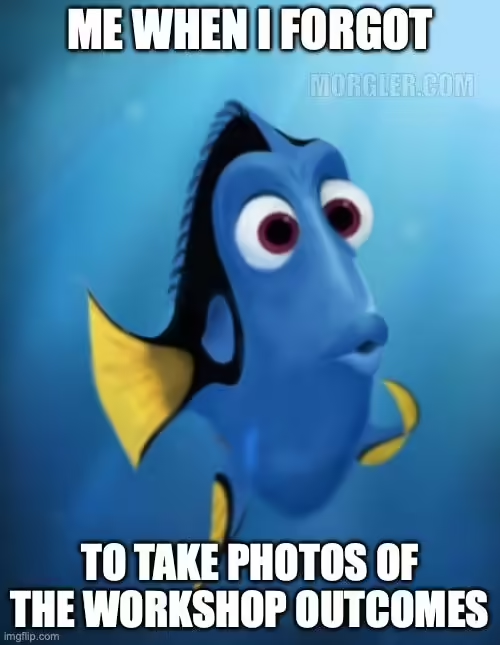
Capture the Magic
Don’t let those brilliant flipcharts and wall displays disappear without a trace.
How I Do It:
- Snap Everything: I take pictures of all flipcharts, sticky note clusters, and even participants in action (with their permission).
- Share the Love: Send these photos to participants after the training.
Why It Works:
- Easy Documentation: Provides a visual record without extra effort.
- Reinforcement: Participants can review the materials later to refresh their memory.
- Storytelling: Photos of activities can help you recall and share stories in future trainings.
9. Encourage Journaling

Reflect and Retain
We forget so much of what we hear, but writing helps cement ideas in our minds.
How I Do It:
- Provide Supplies: I bring small notebooks and pens for everyone.
- Dedicated Time: Schedule 5-10 minute journaling sessions during the training.
- Quiet Time: Play soft music to create a reflective atmosphere.
Why It Works:
- Active Learning: Writing engages different parts of the brain.
- Personalization: Participants make connections to their own experiences.
- Retention: Even if they never read it again, the act of writing helps with memory.
10. Decorate the Room to Set the Mood

Environment Matters
A bland conference room can sap energy faster than you can say “agile manifesto.”
How I Do It:
- Visual Feast: I decorate with memes, agile principles, XP techniques, scrum roles, leadership guidelines—you name it.
- Props and Toys: Sometimes I bring along fun items to liven things up. Another thing I learned from the workshocks of Silicon Valley legend Kimberly Wiefling.
Why It Works:
- First Impressions: Sets the tone as soon as participants walk in.
- Interactive Space: Use the decorations as teaching tools during the training.
- Inspiration Everywhere: Participants can absorb information even during breaks.
11. Play Music to Energize the Room

Set the Soundtrack
Music isn’t just background noise—it can set the pace and mood of your training.
How I Do It:
- Bluetooth Speaker: I bring my own to ensure good sound quality.
- Curated Playlists: Choose music that fits the activity—upbeat for exercises, mellow for journaling. Sometimes I even pick special songs for certain activities.
- Mind the License: For larger groups, make sure you have the rights to play the music. There are easy and very affordable options available online.
Why It Works:
- Atmosphere: Music can make the room feel more welcoming and less sterile.
- Energy Levels: The right tunes can boost participation and enjoyment.
- Focus Aid: Background music can help some people concentrate better during activities.
12. Apply “Training from the Back of the Room” Techniques
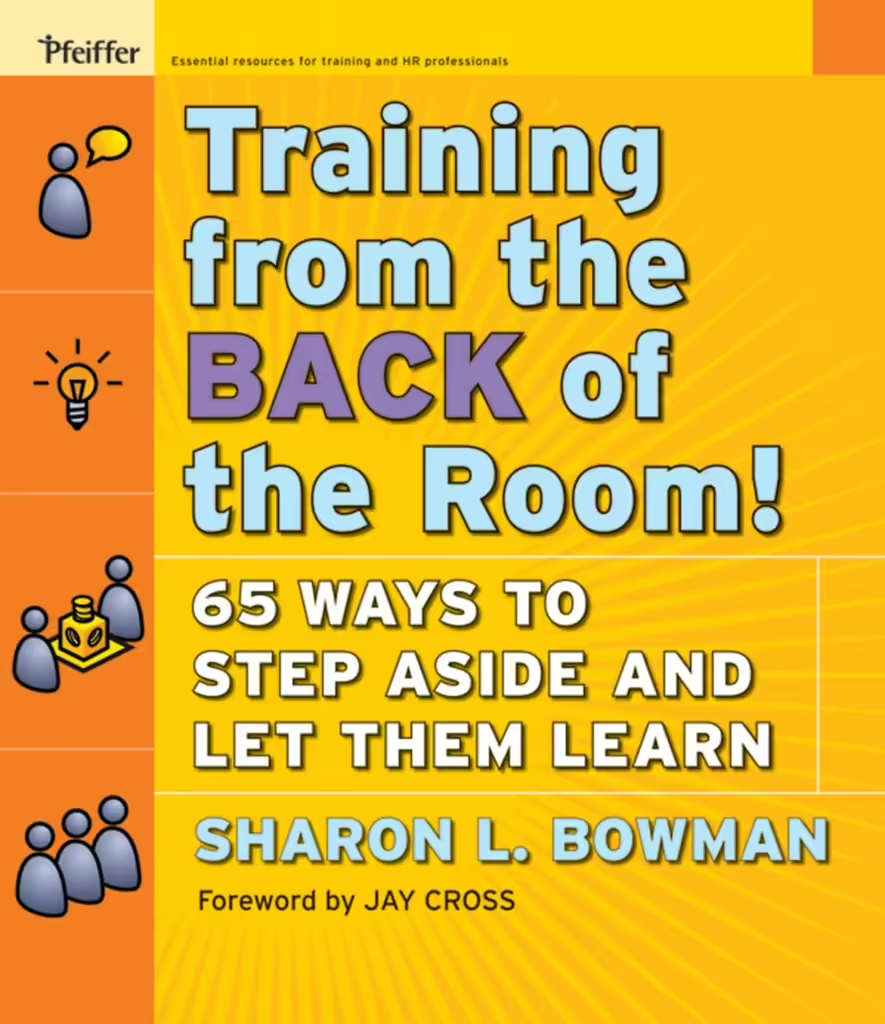
Be the Guide, Not the Sage
Sharon Bowman’s approach focuses on how people learn best—through experience and reflection.
How I Do It:
- Less Lecture, More Interaction: Design activities that let participants discover concepts themselves.
- Use Brain Science: Incorporate techniques that align with how our brains process and retain information.
- Stay Flexible: Be ready to adapt based on the group’s needs and responses.
Why It Works:
- Deeper Learning: Participants are more likely to remember and apply what they’ve learned.
- High Engagement: Keeps energy levels up and boredom at bay.
- Empowerment: Participants take ownership of their learning journey.
Get on Board:
If you haven’t already, I highly recommend reading Sharon Bowman’s book and exploring her methods. It’s a game-changer!
13. Organize Treasure Hunts

Discovery Learning
Who doesn’t love a good treasure hunt? It’s a fun way to get participants moving and exploring the training material. I learned this technique from an amazing facilitator from Tokyo.
How I Do It:
- Hide Gems: Place key information, quotes, or concepts around the room. Think about treasure hunts when decorating the room.
- Set Them Loose: Give participants time to wander, find, and document these treasures. Right before breaks is a great time, so that whoever finished their treasure hunt can go right into the break.
- Combine with Journaling: Encourage them to note down or photograph what they find.
Why It Works:
- Active Engagement: Participants are physically and mentally involved.
- Variety: Breaks up the routine and keeps things interesting.
- Peer Learning: They might discuss their findings with others, enhancing learning.
Conclusion
There you have it—13 tried-and-true hacks to supercharge your agile trainings. Remember, it’s not just about what you teach but how you facilitate the learning experience. Experiment with these techniques, and watch your trainings transform from ordinary to extraordinary.
Happy training, and may your sessions be ever agile!
About Me
I’m an agile coach and consultant passionate about making trainings engaging and effective. I’ve worked with teams worldwide, constantly refining my approach. I’d love to hear your experiences and share what I’ve learned!

